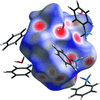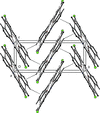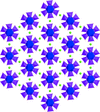issue contents
October 2018 issue

Cover illustration: The cytotoxicities of 4-thiopyrimidine derivatives obtained from ethyl 4-methyl-2-phenyl-6-sulfanylpyrimidine-5-carboxylate were examined against Human umbilical vein endothelial cells (HUVEC) and HeLa, K562 and CFPAC cancer cell lines. The presence of hydroxymethyl and methyl groups offers an interesting new insight into the structures and behaviour of these derivatives. See Stolarczyk, Bryndal, Matera-Witkiewicz, Lis, Królewska-Golinska, Cieslak, Kazmierczak-Baranska & Cieplik [Acta Cryst. (2018), C74, 1138-1145].
research papers






























 journal menu
journal menu































